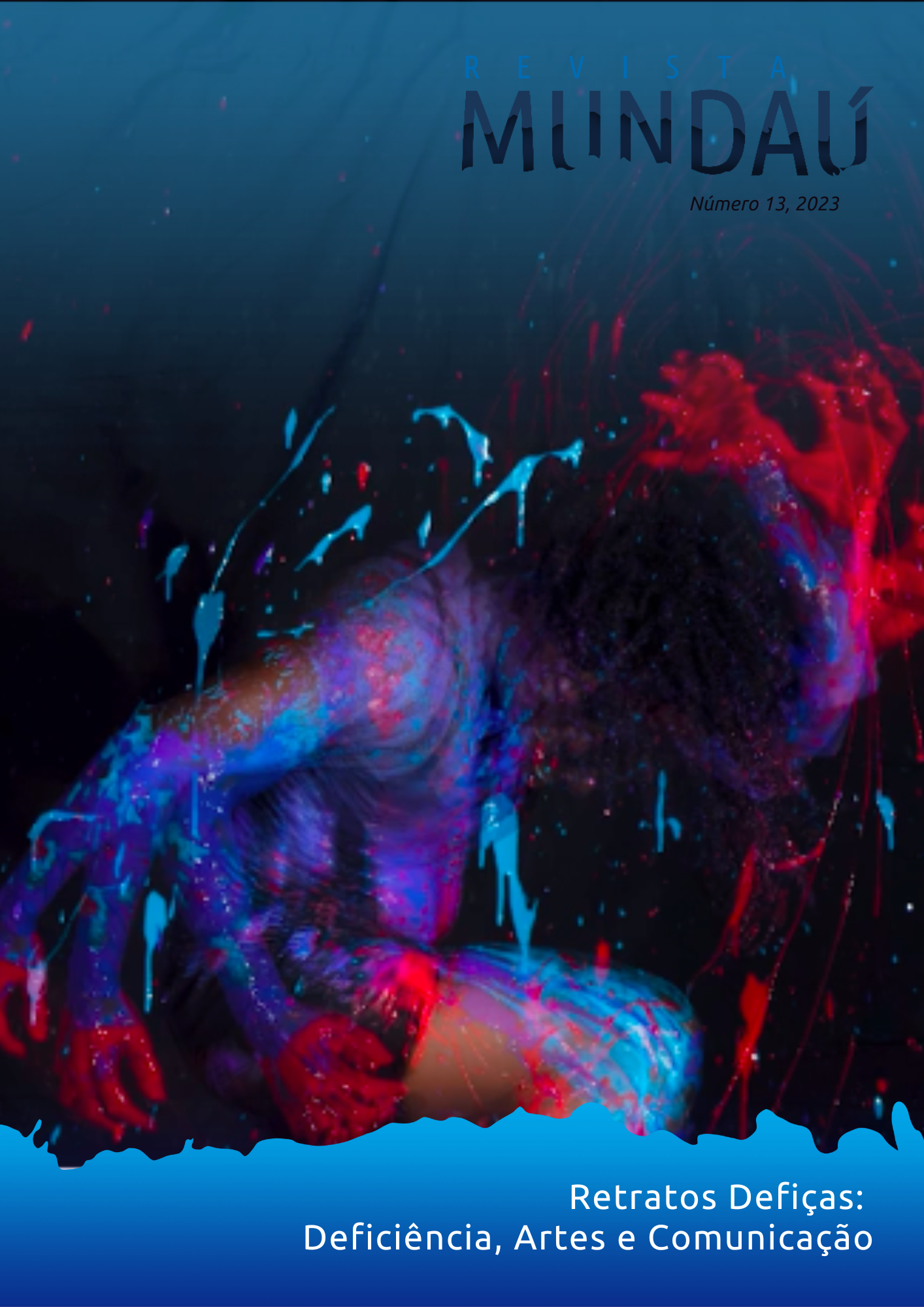"Just for a minute..."
DOI:
https://doi.org/10.28998/rm.2023.13.13884Keywords:
Disability, International Acess Symbol, Just a minute, Anti-normative nudityAbstract
The International Symbol of Accessibility was developed by Susanne Koefoed in 1969 with minor changes to the color and layout of the image to create a visible sign of accessible public space, adapted and intended for disabilities. This symbol highlights the often unsuccessful attempts to adapt to the ordinary world so that human plurality can be experienced at its core. When non-disabled people use these spaces, such as parking lots, public restrooms, blocked access ramps, or tactile floors, even if "just for a minute..." they reduce the opportunity for people with disabilities to experience the same public existence. If architectural spaces intended for people with disabilities are usurped, what about spaces where people with disabilities can display their nudity, such as artworks...? Are there "reserved spaces" for the expression of the nakedness of anti-normative bodies, such as bodies of people with disabilities? The objective of this text is to shed light on these problematizations from the theoretical point of view, that is, from bibliographical research, and from the poetics of drawing, in order to reflect on the (In)VISIBILITY of these bodies. In the course of the research, it became clear that there is still no building of spaces that allow the naked bodies of people with disabilities to express their aesthetic power, which is capable of breaking with the medical discourse, that restricts these bodies to a perception of a “mistake” of nature.
Downloads
References
ARENDT, Hannah. A vida do espírito: o Pensar, o Querer e o Julgar. Tradução Antônio Abranches e Helena Martins. Rio de Janeiro: Relume Dumará, 1992.
DIAS, Fernando Rosa. Estatutos do corpo na arte contemporânea. In: POMBO, Olga; NABAIS, Catarina Pombo (Edit.). CorpoIMAGEM: representações do corpo na ciência e na arte. Portugal: Faculdade de Belas Artes (FBUL), Universidade de Lisboa, Portugal, 2019. p. 197205.
DINIZ, Débora. O que é deficiência. São Paulo: Brasiliense, 2007.
FERNANDES, Sueli. Fundamentos para educação especial. Curitiba: 2. Ed. Curitiba: Ibpex, Série Fundamentos da Educação, 2011.
FOUCAULT, Michel. História da Sexualidade I: a vontade de saber. 19ª Edição. Tradução Maria Thereza da Costa Albuquerque e J. A. Guilhon Albuquerque. Rio de Janeiro: Edições Graal, 2009.
GAVÉRIO, Marco Antônio. Nada sobre nós, sem nossos corpos! O local do corpo deficiente nos disability studies. Revista Argumentos, v. 14, n.1, p. 95–117, 2017.
GAVÉRIO, Marco Antônio. Estranha atração: A Criação de Categorias Científicas para Explicar os Desejos pela Deficiência. 2017. Dissertação (Mestrado em Sociologia) — Programa de Pós-Graduação em Sociologia, Universidade Federal de São Carlos, São Carlos, 2017.
GUERRILAGIRLS. Our Story. Disponível em: https://www.guerrillagirls.com/our-story. Acesso em: 5 set. 2022.
GUERRA, Itxi. Luta contra o capacitismo: anarquismo eccapacitismo. Fortaleza: Editora Terra sem Amos, 2021.
IMAGEM 01. Retrato de um home com deficiência. Autor desconhecido. Óleo sobre tela, século XVI. Museu de História da Arte, Viena. Disponível em http://bidok.uibk.ac.at/projekte/bildnis/. Acesso em: 9 jul. 2022.
IMAGEM 02. Símbolo de Cadeirante. Autor Susanne Koefoed, fundo preto, imagem branca sem cabeça. Disponível em: https://cultura.estadao.com.br/blogs/marcelo-rubens-paiva/por-um-novo-simbolo-de-deficiente-e-idoso/. Acesso em: 9 jul. 2022.
IMAGEM 03. Símbolo de Cadeirante. Autor Susanne Koefoed, fundo azul, imagem branca com cabeça. Disponível em: https://cultura.estadao.com.br/blogs/marcelo-rubens-paiva/por-um-novo-simbolo-de-deficiente-e-idoso/. Acesso em: 9 jul. 2022.
IMAGEM 04. Símbolo de Cadeirante. Autor Sara Hendren, fundo azul, imagem branca com cabeça. Disponível em: https://cultura.estadao.com.br/blogs/marcelo-rubens-paiva/por-um-novo-simbolo-de-deficiente-e-idoso/. Acesso em: 9 jul. 2022.
IMAGE 05. É só um minutinho... I, da Série (In)VISÍVEIS, 2022. Autor Fábio Passos. Mina de grafite colorida sobre papel. Disponível em: www.fabiopassos.com. Acesso em: 9 jul. 2022.
IMAGE 06. É só um minutinho... II, da Série (In)VISÍVEIS, 2022. Autor Fábio Passos. Mina de grafite colorida sobre papel. Disponível em: www.fabiopassos.com. Acesso em: 9 jul. 2022.
IMAGE 05. É só um minutinho... III, da Série (In)VISÍVEIS, 2022. Autor Fábio Passos. Mina de grafite colorida sobre papel. Disponível em: www.fabiopassos.com. Acesso em: 9 jul. 2022.
KRISTEVA, Julia. Pouvoirs de l’ horreur: essai sur l’abjection. Paris: Éditions du Seuil, 2015.
MELO, Anahi Guedes de; NUERNBERG, Adriano Henrique. Gênero e deficiência: interseções e perspectivas. Estudos Feministas, Florianópolis, v. 20, n. 3, p. 635–655, 2012.
PAIVA, Marcelo Rubens. Por um novo símbolo de deficiente e idoso. Coluna Estadão, 2013. Disponível em: https://cultura.estadao.com.br/blogs/marcelo-rubens-paiva/por-um-novo-simbolo-de-deficiente-e-idoso/. Acesso em: 9 jul. 2022.
THOMSON, Rosemarie Garland. Extraordinary bodies extraordinary bodies: figuring physical disability in American culture and literature. New York: Columbia University Press, 2017.








